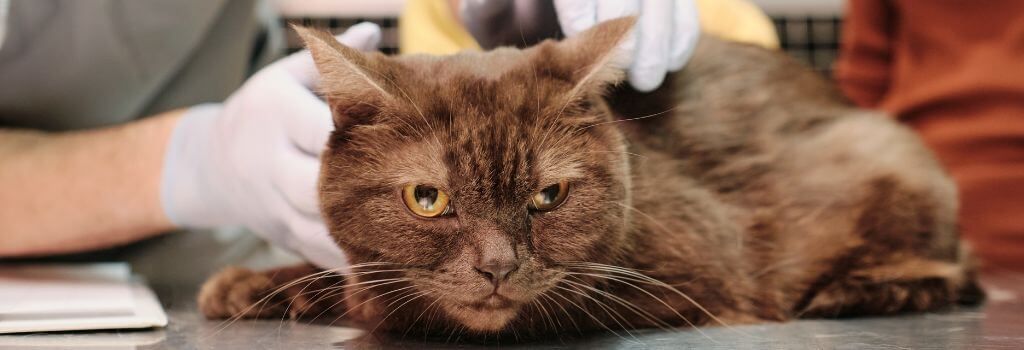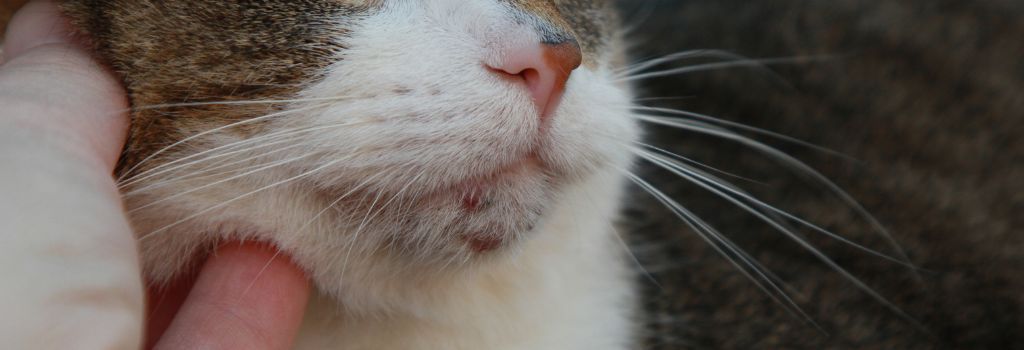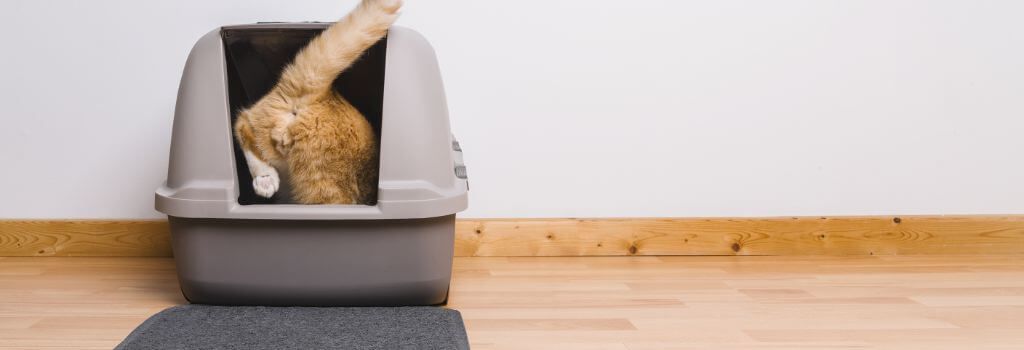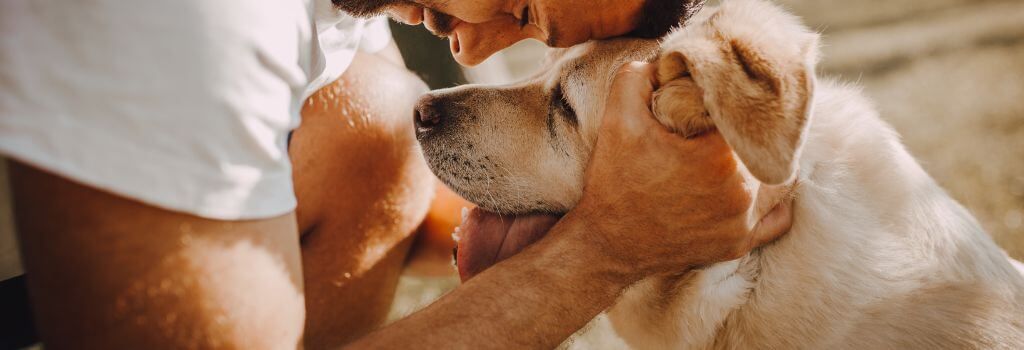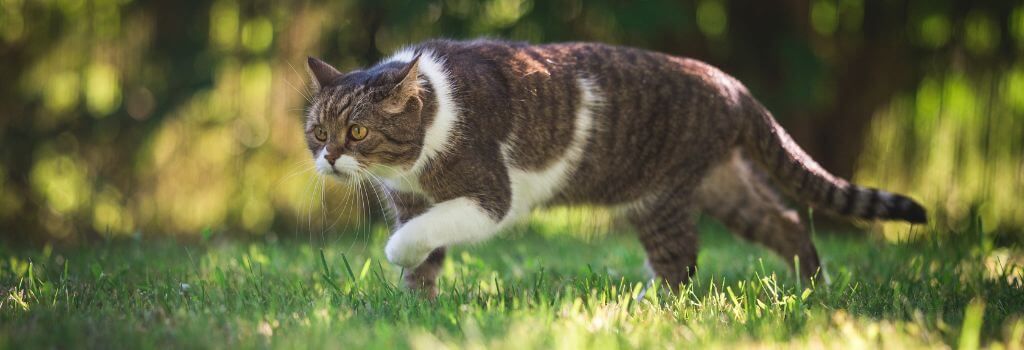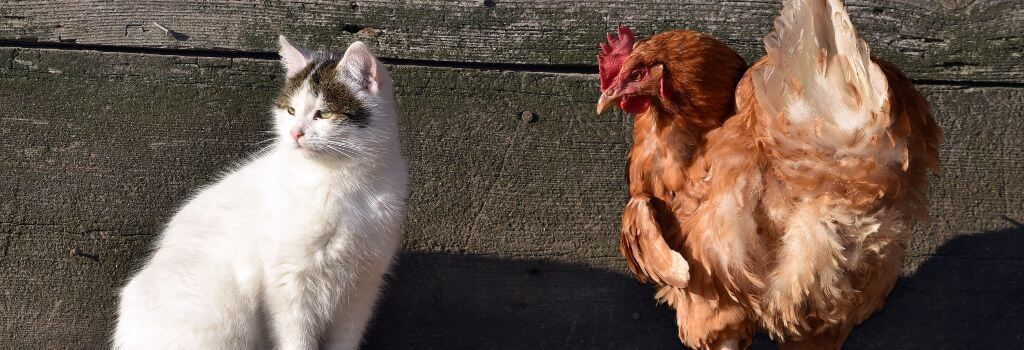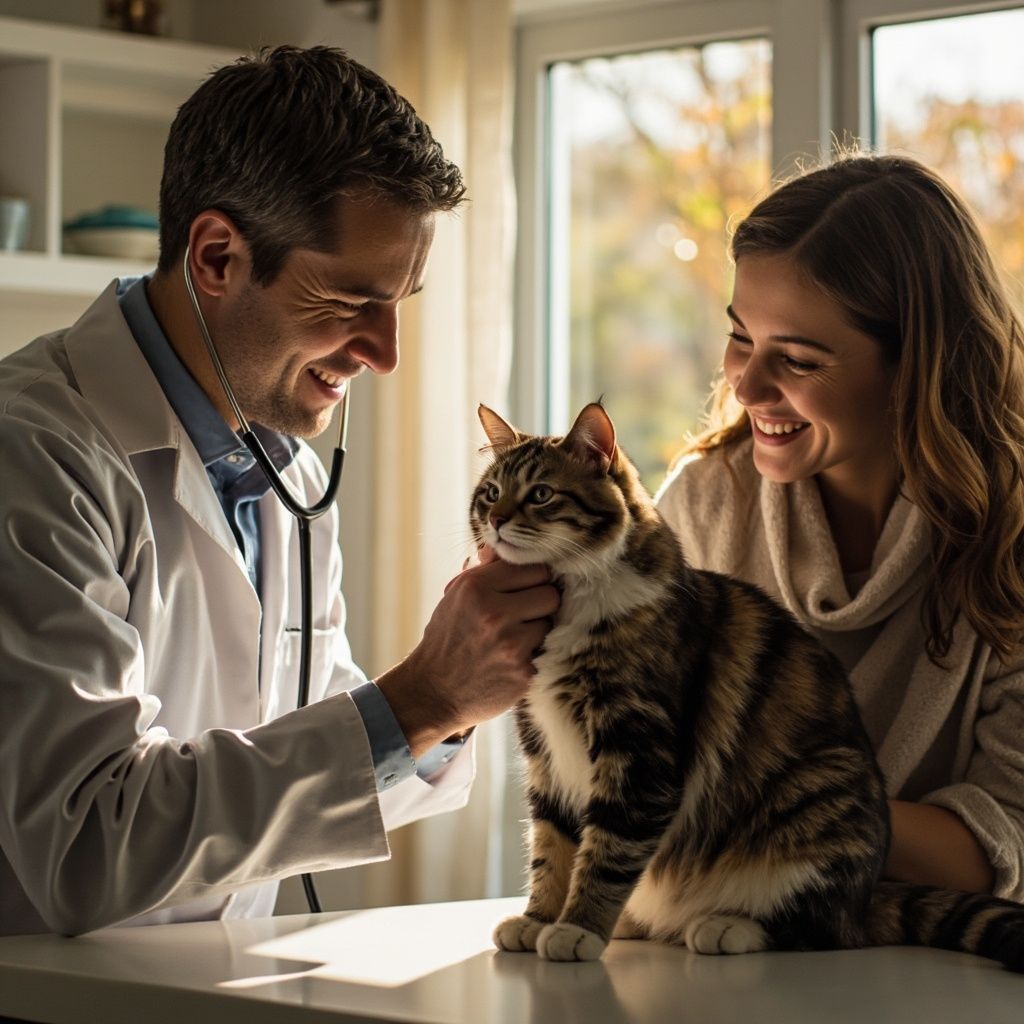Why Indoor Cats Need Vaccines and Preventative Care, Too!
As a cat owner, you might believe that keeping your feline friend indoors shields them from all dangers and health issues. While indoor cats are generally safer from many outdoor hazards, they still require vaccines and preventative care to ensure a long, healthy life.
Let's dive into why vaccines and regular veterinary check-ups are essential for indoor cats and explore the core and optional vaccines recommended for our indoor companions.
Why Indoor Cats Need Vaccines: Things Can Travel Indoors
Even if your cat never steps outside, germs and viruses can make their way into your home. Bacteria and viruses can hitch a ride on your shoes, clothes, or other pets. This exposure puts your indoor cat at risk for diseases that could easily be prevented with vaccines.
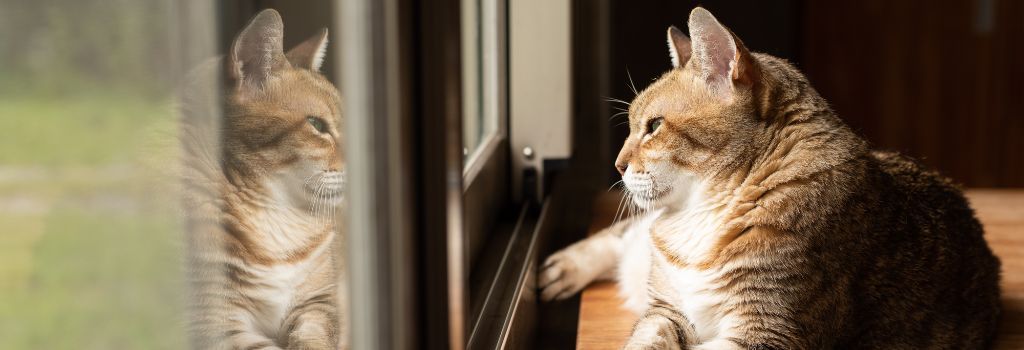
Here are some common diseases and bacteria that can affect indoor cats:
1. Feline Panleukopenia (FPV)
Feline Panleukopenia (also known as feline distemper) is a highly contagious viral disease that can be brought into the home on shoes or clothing. This virus is similar to canine parvovirus and can survive in the environment for extended periods and causes severe gastrointestinal issues, dehydration, and even death.
2. Feline Herpesvirus (FHV-1) and Calicivirus (FCV)
Feline Herpesvirus and Calicivirus are the primary causes of upper respiratory infections in cats. These viruses can be carried on human clothing, hands, and other pets, leading to symptoms such as sneezing, nasal discharge, and conjunctivitis in cats. Both of these viruses have the potential to cause chronic disease requiring lifelong treatment and management.
3. Rabies
Rabies is a 100% fatal disease that affects the nervous system of every mammal. This virus is still highly prevalent in parts of our country, specifically in wildlife species like bats and foxes. This virus is transmitted through bites from infected animals. If a rabid animal's saliva comes into contact with an open wound or mucous membranes, it poses a risk. Given every cat’s propensity to hunt and natural curiosity, it is essential to keep your cat's rabies vaccination up-to-date.
4. Feline Leukemia Virus (FeLV)
Feline Leukemia Virus is a viral infection that suppresses the immune system and can lead to anemia and cancer. While it primarily spreads through direct contact with infected cats, it can also be brought into the home via shoes or clothing contaminated with infected saliva or urine. This disease is particularly concerning in multi-cat households
5. Bordetella bronchiseptica
Bordetella bronchiseptica causes respiratory infections in cats. This bacterium is transmitted by respiratory droplets or can be carried on human clothing or other pets, leading to symptoms like coughing, sneezing, and nasal discharge in cats.
6. Chlamydia felis
Chlamydia felis is a bacterium that causes conjunctivitis and upper respiratory symptoms in cats. It can be transmitted via contaminated clothing, hands, or other pets, particularly in multi-cat households.
7. Fungal Infections (Ringworm)
Ringworm is a fungal infection that can affect cats and humans. The spores can be carried into the home on human skin, clothing, or other pets, leading to itchy, circular lesions on the skin.
8. Intestinal Parasites (Giardia, Toxoplasmosis)
Giardia and Toxoplasmosis are intestinal parasites that can be transmitted to cats through contaminated soil or fecal matter on shoes. These parasites cause gastrointestinal issues such as diarrhea, vomiting, and weight loss, plus almost all intestinal parasites are zoonotic, meaning, they can cause human disease as well.
9. Fleas and Ticks
Fleas and ticks can hitch a ride on clothing, shoes, or other pets and infest indoor cats. These parasites not only cause itching and discomfort but can also transmit diseases such as Feline Infectious Anemia, Lyme disease, and Plague.
Why Indoor Cats Need Vaccines: Cats Can Escape
Even the most vigilant cat owners know that accidents happen. A door left ajar, a window screen pushed loose, or a quick dash outside can expose your indoor cat to the same diseases and parasites as outdoor cats. Estimates indicate that around 1 in 4 indoor cats may escape outdoors at least once in their lifetime , either through open doors, windows, or other unexpected means. Vaccines act as a safeguard, providing your cat protection in unexpected situations.
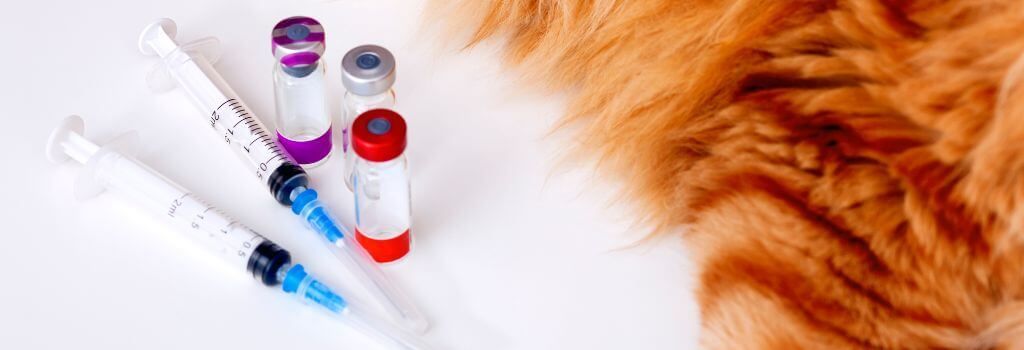
Preventative Measures to Keep Your Cat Protected
The 3 Core Vaccines for Cats
Core vaccines are essential for all cats , whether indoor or outdoor. They protect against highly contagious and potentially deadly diseases.
- Feline Panleukopenia (FPV) (Feline Distemper)
- Feline Herpesvirus (FHV-1) and Calicivirus (FCV)
- Rabies
Optional Vaccines for Cats
Optional, or non-core, vaccines may be recommended based on your cat's lifestyle, health status, and risk of exposure. Discuss with your veterinarian to determine if these vaccines are appropriate for your indoor cat.
- Feline Leukemia Virus (FeLV)
- Bordetella
- Chlamydia felis
The Importance of Preventative Care
Regular veterinary visits are not just for vaccinations. Preventative care includes routine check-ups, dental care, parasite control, and early detection of health issues. Let’s look at 5 pieces of preventative care that can enhance your cat's life.
- Early Detection of Illnesses: Cats are masters at hiding illness. Regular veterinary check-ups every 6-12 months plus yearly preventative blood work can help catch health issues early before they become severe. Additionally, early detection allows you and your veterinarian more treatment options and a more positive long term prognosis.
- Dental Health: Dental disease is extremely common in cats and can lead to severe pain and other health issues like kidney disease. Regular dental check-ups and cleanings are crucial for maintaining your cat's oral and overall health and longevity.
- Parasite Control: Indoor cats can still be at risk for parasites like fleas, ticks, and intestinal worms. Regular preventative treatments help keep these pesky invaders at bay.
- Weight Management: Obesity is a common issue in indoor cats due to a lack of exercise. Your vet can provide guidance on proper nutrition and exercise to keep your cat at a healthy weight and prevent diseases like diabetes and kidney disease.
- Hygiene: Make sure to keep your cat’s food and water bowls clean at all times and avoid using plastic dishes (use glass, porcelain or metal). If possible, clean your cat’s litter box daily or as often as you can and take note of any changes to your cat’s litter box activity. Depending on your cat, you should brush or assist with grooming weekly. Regularly clean your cat’s living environment, such as bedding, cat towers and perches or commonly used blankets. All cats should have access to scratching posts or scratching pads to keep their nails healthy. If you have had contact with cats outside of your household or if you have stray cats living near your house, remove your shoes at the door, and wash your hands before handling your cat.
Keeping Your Cat Covered
Keeping your indoor cat healthy involves more than just providing a safe environment. Vaccinations and preventative care are crucial components of responsible pet ownership. By giving your cat the necessary vaccines and attending regular check-ups, you're taking proactive steps to protect them from preventable diseases and supporting them to live a long, happy, healthy life.
If you have questions and you'd like to reach out to us, you can call us directly at (859) 625-5678 , or you can email us at aacrichmond@yahoo.com. Don't forget to follow us on social media Facebook , Instagram.
Recent Posts

